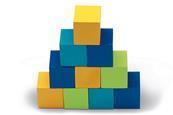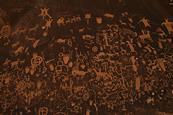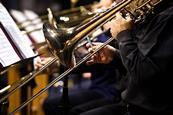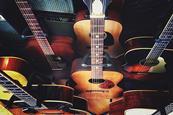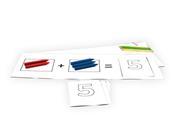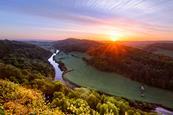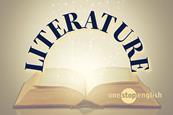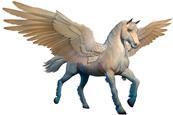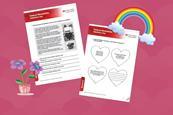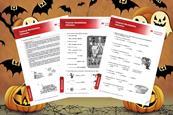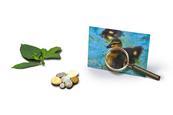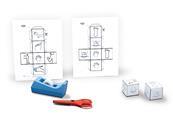Amazing World of Animals
These lessons by Carol Read will build your Young Learners’ language skills and knowledge of the animal world.
Amazing world of animals: Lesson 6: Endangered animals
March 3rd is World Wildlife Day. Help your students discover more about endangered animals with this project lesson for young learners.
Amazing world of animals: Lesson 5: Animal life cycles
In the fifth lesson of Carol Read’s Amazing world of animals, children learn to recognize that all animals have life cycles, to understand similarities and differences between them, and to identify and describe the life cycles of two animals. Step-by-step teacher’s notes and student worksheets are included.
Shapes and colours
In this lesson plan, pupils learn to distinguish between two- and three- dimensional shapes, and recognise these shapes in their immediate surroundings by matching and counting. Includes project ideas.
A shape exhibition
A great lesson plan that uses coloured pencils and cut-outs to introduce or review shapes.
Picasso
In this lesson plan, pupils learn about influential artist Pablo Picasso while consolidating key art vocabulary.
Famous explorers
In this lesson plan, students find out about the lives and amazing achievements of Captain James Cook (world famous explorer), Valentina Tereshkova (first woman in space) and Roald Amundsen (first explorer to reach the South Pole).
CLIL: History—Sylvia Alice Earle
Introduce your students to Silvia Alice Earle, famous for her underwater travels.
Prehistory
In this lesson plan, pupils learn about how prehistoric people lived and what they ate.
Musical instruments and parts of the body
In this lesson plan, pupils match instruments to the part of the body used to play them, and complete sentences to describe pictures of musicians playing. The worksheet features fun illustrations and helps reinforce vocabulary for musical instruments and parts of the body, as well as the present continuous.
Musical medley
The first of these worksheets looks at a number of instruments and questions which would make the highest and lowest sounds? The second worksheet provides answers to this question.
Musical instruments: Joaquin Rodrigo
In this lesson plan, pupils learn about the different types of musical instruments and one of Spain’s most famous composers, Joaquín Rodrigo.
Number sequences
Encouraging your pupils to recognise sequences and patterns in numbers and words is important for developing their learning skills. In these worksheet activities, pupils identify patterns to complete number sequences and use their knowledge of times tables to colour the squares a chart.
Venn diagrams
How many pupils are afraid of snakes but not of spiders? What share of the class likes strawberry ice cream? In this lesson plan, pupils read a text then complete a Venn diagram and pie charts. Warm up activities and project ideas engage young learners by encouraging them to discuss ...
Sums
A worksheet with activities to make addition, subtraction and multiplication fun while reinforcing the numbers 1-100. Organise the pupils in pairs so that they can discuss and help each other, or set up the activities as a class competition to increase the challenge.
Using signs
Don’t pick the vegetables! In this lesson plan, pupils match health and safety signs to the appropriate places in a summer camp, and number sentences to match the signs to the correct instructions. Teaches young learners about using signs and symbols, while consolidating key vocabulary words such as ‘forest’, ‘swimming ...
Means of transport
This lesson plan aims to teach the different types of transport and reinforce prepositions such as ’by’ and ’on’.
The media: Communication
This lesson plan introduces the different types of media as well as expressions of time.
Animal classification
This lesson plan consolidates the names of animals, the characteristics of mammals and practises using is and isn’t.
Animal characteristics
This lesson plan introduces the external characteristics of animals by having pupils complete animal riddles, draw animals and then create new riddles for their partner.
Wild animals: Mammals, reptiles and birds
In this lesson plan, pupils learn the characteristics of our furry, scaled and feathered friends.
Tourism: Question Loop Speaking Activity
This fun activity can be used at the beginning of a new topic like ’Tourism’ to introduce new material, or the end to revise material already learned.
The Weather And The Four Seasons
A lesson plan for pupils to use the present continuous to describe the weather and practise vocabulary for the months, the seasons and clothes.
People and their environment: Rivers
A lesson plan with matching and true/false exercises to teach about the course of a river and review the present simple tense.
CLIL: Literature - Poetry appreciation
Nurture a passion for poetry and enhance the speaking abilities of your young learners with this lesson plan and worksheet.
Greek mythology
Which mythological Greek creature had the body of a horse and the head and torso of a man? Which had snakes for hair? Introduce young learners to the fascinating world of Greek mythology in this lesson plan. Pupils match descriptions to the correct character, and use their imagination to draw ...
Fantasy characters
Describing story characters is an important stage in the development of creative writing. In this worksheet, pupils match pictures and text descriptions to fairytale creature before writing their own description of a fantasy character.
Festival Worksheets: Valentine's Day
Get students ready for Valentine’s Day with these fun activities!
Festival Worksheets: Father’s Day
Get students ready for Father’s Day with these lovely activities!
Festival Worksheets: Halloween
Ignite your students’ Halloween spirit with these thrilling activities!
Experiments: Matchbox paddle boat
In this experiment, pupils learn about the build-up of stored energy and its subsequent release by building a boat powered by an elastic band. Students complete gap-fill and matching exercises practising related vocabulary and the first conditional before placing a sequence of images relating to the experiment in the correct ...
Classifying materials
Is it an animal, plant or mineral? Pupils match the puzzle pieces, fill in a chart and complete sentences to identify the materials used to make everyday objects. Teacher’s notes include ideas for an additional group activity and post-lesson projects.
Parts of the body
Worksheet to consolidate different body parts via a labelling activity and an exercise which gets learners thinking which body parts connect to which.



